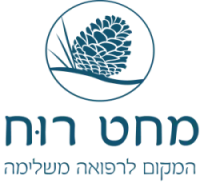Once upon a time, in a small village in ancient China, there lived a young boy named Ming. Ming was a curious and ambitious boy who was always eager to learn about the world around him. He spent most of his days exploring the fields and forests that surrounded his village, and he was especially fascinated by the different plants and herbs that grew there.
One day, while wandering through the forest, Ming stumbled upon an old man who was sitting by a small stream. The old man was a practitioner of traditional Chinese medicine, and he immediately caught Ming’s attention. Ming approached the old man and asked him if he could learn about the healing powers of the plants and herbs that grew in the forest.
The old man, who was named Wu, was pleased by Ming’s interest and decided to take him on as his apprentice. Wu taught Ming everything he knew about the different herbs and how to use them to heal the body. Ming learned how to make teas and tinctures, and how to create poultices and salves. He also learned about the principles of balance and harmony that were at the heart of Chinese medicine.
As Ming grew older, he became an expert in the art of traditional Chinese medicine. He could diagnose a patient’s illness just by looking at their tongue, and he knew which herbs and acupuncture points to use to treat various ailments. Ming’s reputation as a skilled healer spread throughout the village, and people came from far and wide to seek his help.
One day, a poor farmer came to Ming with a sick child. The child was burning with fever and had a terrible cough. Ming immediately diagnosed the child with a chest infection and prescribed a tea made of ginger, licorice, and mint. He also applied heat to certain acupoints on the child’s back to help clear the lungs. To the farmer’s amazement, the child’s fever broke that very night and the cough disappeared in just a few days.
Word of Ming’s healing abilities soon reached the ears of the local lord, who was suffering from a chronic illness. The lord summoned Ming to his palace and asked him to treat his condition. Ming examined the lord and prescribed a course of treatment that included herbs, acupuncture, and massage. To everyone’s surprise, the lord’s health improved dramatically and he was able to resume his duties.
Thanks to Ming’s expertise in traditional Chinese medicine, he was able to heal many people and help them to lead healthier and happier lives. He continued to practice for many years, passing on his knowledge to a new generation of healers, and his name was remembered with honor and respect.
The story above is fictional but the Chinese traditional medicine practices, treatments and methods are well known to have a very long history of effectiveness and has been passed down through generations. It’s still widely used and practiced today in many parts of the world.
